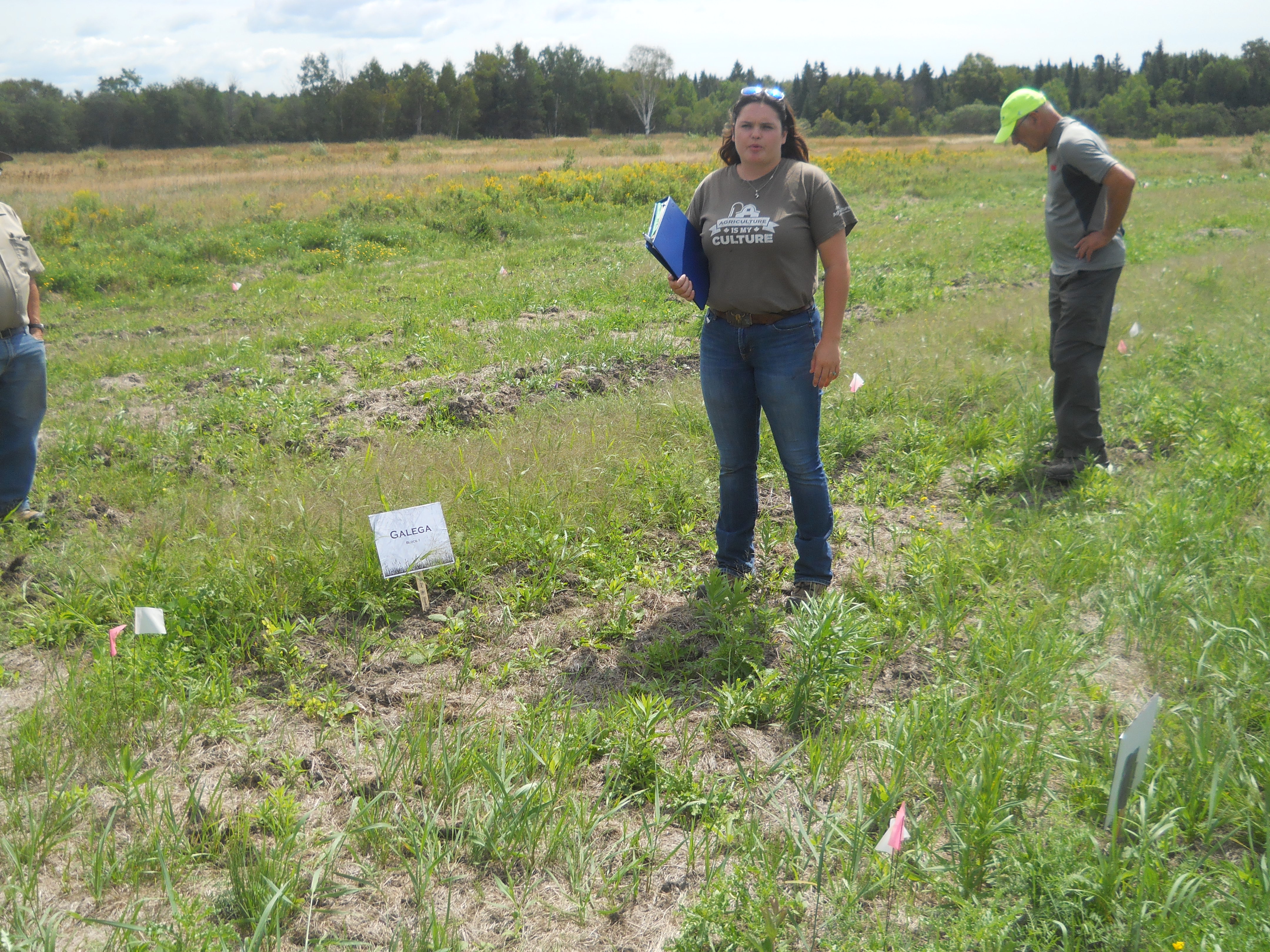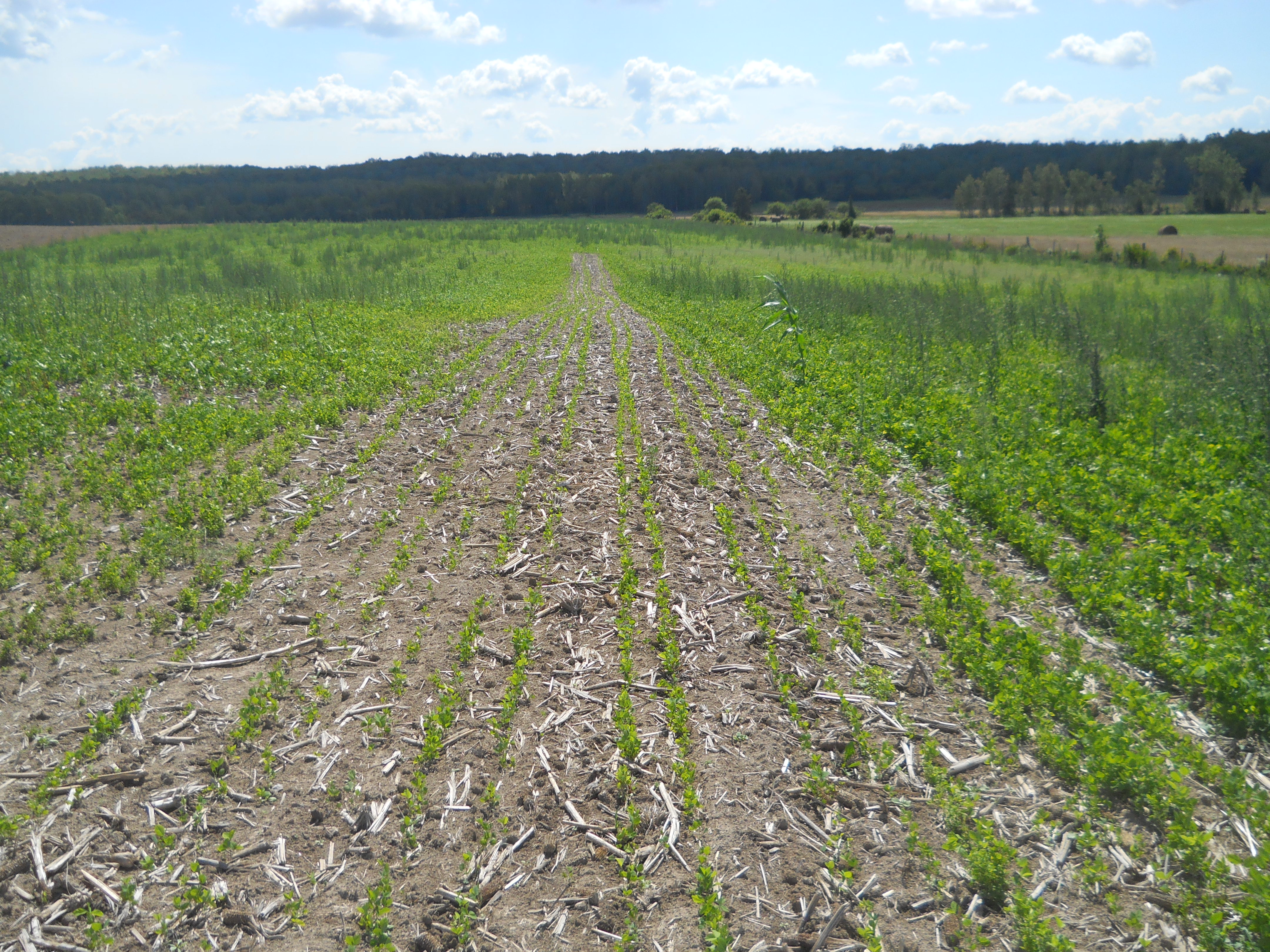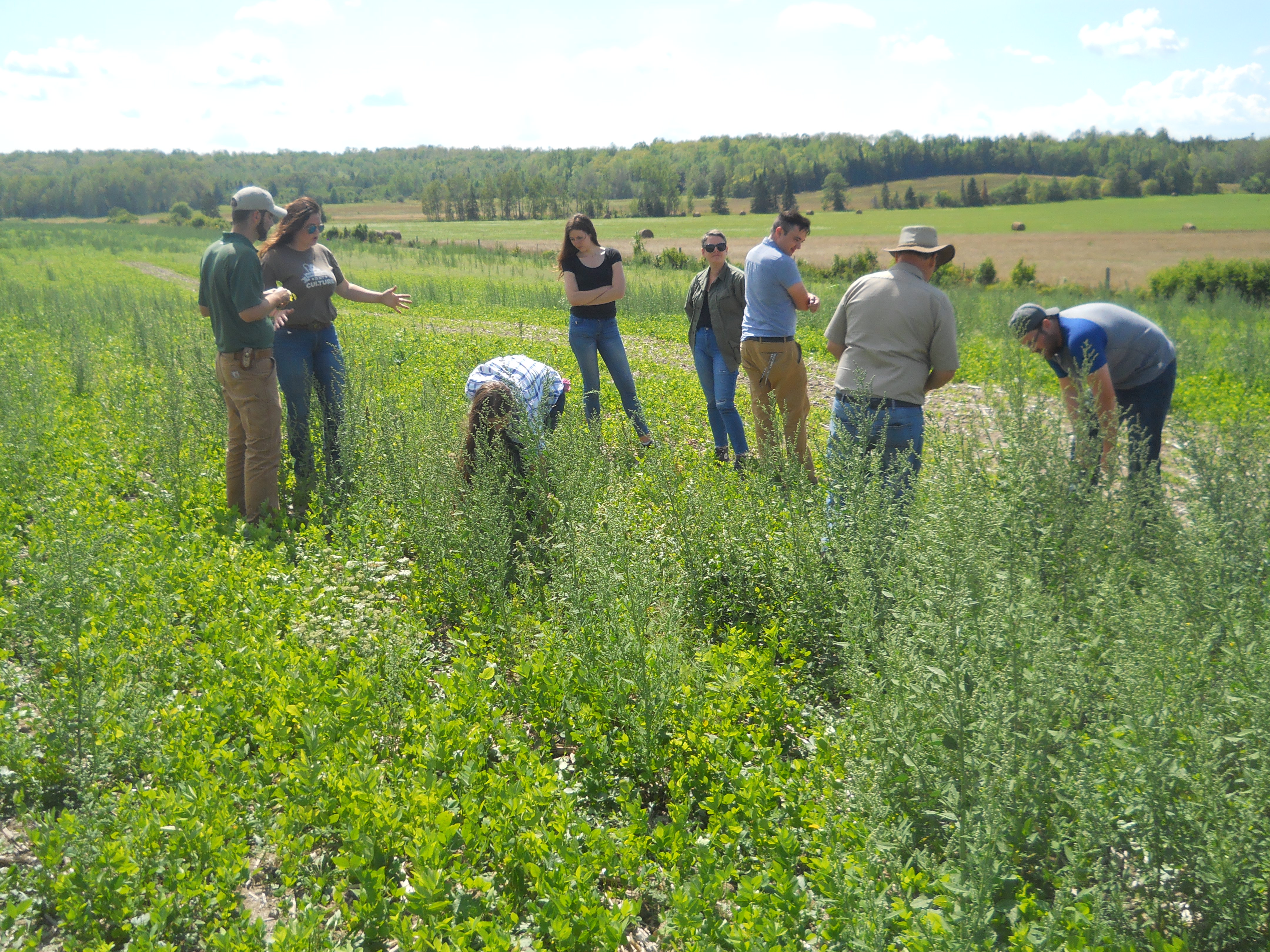Ontario groups studying alternative forage galega for northern climate
A trip to the Rural Agri-Innovation Network’s summer tour near Thessalon, Ontario, provided an opportunity for a first look at Galega (Galega orientalis).

It’s not far from Michigan’s Upper Peninsula to Sault Ste. Marie, Ontario. Just cross the International Bridge and you’re there. With a new, enhanced Michigan driver’s license, I made the trip east from Sault Ste. Marie about 60 miles (90.2 km) to Thessalon, Ontario, on Aug. 22, 2018, and attended the Rural Agri-Innovation Network (RAIN) summer tour.
The RAIN organization is a division of Sault Ste. Marie Innovation Centre with support from farmers and communities to enhance the agriculture and food sector in Ontario’s Algoma district. Some of their staff have attended Michigan State University Extension programs in the eastern Upper Peninsula, and some of ours have participated in their Ontario programs.
James DeDecker, MSU Extension field crops educator from Presque Isle County, gave a talk on malting barley at the RAIN event. The rest of the event focused on alternative legume forages for northern climates. Galega (Galega orientalis) was of particular interest.
According to Tarlok Singh Sahota, director of research and business at the Lakehead University Agricultural Research Station in Thunder Bay, Northwestern Ontario, Galega, also called oriental goat’s rue, is a perennial forage legume native to the Caucasus region (located at the border of Europe and Asia). Forage Galega should not be confused with another Galega species. G. officinalis, which is a weed in Europe, New Zealand and South America, and toxic to livestock.
The RAIN staff planted small, replicated plots of perennial forage legumes, including Galega, this spring at their Thessalon location.
Mikala Parr, RAIN research technician, discussing Galega and other alternative perennial legume forages.
The Aug. 22 tour also included a stop at a beef farm near Bruce Mines, Ontario, where a commercial field of approximately 10 acres of Galega was planted in June 2018. Mikala Parr, RAIN research technician, made a second planting in this field in early July to assess weed competition in a later seeding.
RAIN Galega weed management demonstration planted in July 2018.
Galega has potential in northern climates as an alfalfa, clover or birdsfoot trefoil substitute. Research in Europe and Ontario has provided a good start on understanding some of the advantages and limitations of this crop, which is mostly unknown in Michigan.
Advantages:
- Long persistence, up to 15 years
- High protein content
- Tolerant of mildly acidic soils
- Consistent yields
- Winter hardy
- Earlier spring growth, as much as two weeks earlier than alfalfa
Limitations:
- Best for silage or hay, as opposed to pasture
- Limited seed supply, inoculant difficult to obtain
- Long establishment period without cutting, up to two years
- Lower maximum yield than other perennial forage legumes
- Does not tolerate poorly drained soils
- High seeding rate, 30 pounds per acre
- Does not tolerate competition during establishment (weeds, nurse crops)
- No current chemical weed control options
RAIN field day participants viewing Galega on a farm near Bruce Mines, Ontario.
It is premature to decide whether Galega has a place on Upper Peninsula and other northern Michigan farms. One potential limitation that stands out is the difficulty of obtaining inoculant for Galega and related nitrogen fertility concerns. The Galega on display in Ontario did not have detectable nitrogen fixing root nodules and was quite light green-yellow in color. Although Galega is apparently always somewhat lighter in color than alfalfa, general chlorosis is also a classic symptom of nitrogen or sulfur deficiency. Sahota recommends approximately 40 pounds per acre of nitrogen and 30 pounds per acre of sulfur for Galega.
Perhaps nitrogen fertilizer would become unnecessary with the addition of inoculant at planting, but until inoculant is readily available, this would represent an additional cost of Galega production relative to alfalfa. Still, the innovative work of our Canadian colleagues is of interest to those of us farming and teaching in similar climates.
More information on galega
- Tips for Galega Cultivation, Thunder Bay Federation of Agriculture
- Galega Forage Management, Northern Ontario Farm Innovation Alliance
- Fodder Galega – The New Kid on the Block, Agriculture and Agri-Food Canada
- Galega – A New Forage Import from Eastern Europe, Country Guide



 Print
Print Email
Email


